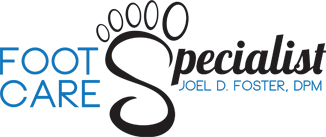Fungal nails are a common problem that can be uncomfortable and unsightly. If left untreated, the infection may spread to other body parts. Fortunately, there are a variety of treatment options available to help restore your nails to health.
In this article, we’ll discuss the best treatments for fungal nails so you can make an informed decision about which one is right for you.
What is Toenail Fungus?
Toenail fungus is a fungal infection of the toenails. Fungi are tiny organisms that live in warm, moist environments. They are often found in public places such as locker rooms, swimming pools, and showers. The fungus can also be found on nail salon tools. The fungi can enter the nails through small cuts or breaks in the skin.
The resulting infection causes the nails to become thickened, discolored, and brittle. Because of this, most people become embarrassed to show their nails in public. While unsightly, the fungal nails can but usually do not cause pain in the toenails.
Toenail fungus is more common in people who have diabetes or a weakened immune system. Fungal toenails are also more common in older adults.
Symptoms of toenail fungus include:
- Thickened nails
- Brittle nails
- Discolored nails
- Nails that separate from the nail bed
- Nails with a bad odor
If left untreated, toenail fungus can cause the nails to become deformed. The fungus can also spread to other parts of the body. The earlier you treat fungal nails, the easier the treatment usually is, so let’s take a look at your treatment options.
Home Remedies for Fungal Nails
There is a range of remedies for fungal nails that can be done at home, including:
- Topical antifungal medications: These creams, lotions, and sprays are applied directly to the affected nail. They help prevent the fungus from spreading and can speed up the healing process.
- Other topical products: There are also a variety of other topical products that can be used to treat fungal nails, such as tea tree oil and iodine. These products can be purchased over the counter and applied directly to the affected area.
- Oral antifungal medications: These are prescribed by a doctor and taken orally. They work to kill the fungus throughout your body, rather than just targeting a single area.
- Foot soaks: Medicated foot soaks can help to reduce the symptoms of fungus. Soaking your feet in warm water with Epsom salts, vinegar, or baking soda can help to kill the fungus and prevent it from spreading.
It should be noted that, while convenient, these methods are usually unsuccessful in eliminating the fungus for good. In some cases, they may even irritate your skin and make the infection worse.
For this reason, it is important to speak with our doctor if you suspect you have a fungal infection so that you can get an accurate diagnosis and receive the correct treatment.
Professional Treatment for Fungal Nails
Professional treatment for fungal toenails may include the use of antifungal medications or surgical removal of the affected nail(s). In most cases, our doctor will recommend laser treatment to kill any remaining fungal cells and decrease the risk of recurrence.
Laser Treatment
Laser treatment for toenail fungus is a relatively new form of treatment that has been proven to be effective in eliminating the fungus that causes fungal nails.
Laser treatments use high-intensity light beams to target and destroy the fungal cells without harming the surrounding tissue. It is a safe, non-invasive procedure with minimal side effects.
The benefits of laser treatment include the following:
-
- No medications required: Unlike oral antifungal medications, laser treatment does not require any drugs or topical ointments.
- No side effects: Since laser treatment does not involve any drugs or topical ointments, it has minimal side effects.
- No daily routine: The laser treatment only needs to be done in our office, and most people only need three to four treatments that are spread weeks apart, so there is no need for an ongoing daily routine.
- Higher success rate: Laser treatment is more successful than other treatments, such as medications or topical creams.
- No pain: Some clients report that they feel a slight warming sensation, but nothing else. The laser does not burn, bruise, or leave any scarring.
One Step Further: Pulse Treatment
Pulse treatment for fungal nails is even more effective than regular laser treatment. It consists of multiple short pulses of high-energy light that penetrate into the nail plate and kill the fungal infection.
This procedure is quick and painless, and results can be seen within weeks. It also has a higher success rate than regular laser treatment.
Combining Laser and Oral Treatments for Best Results
For the best results, our foot care team recommends combining laser treatments with oral medications. This combination can reduce symptoms faster and provide more lasting results. By doing both, you’ll be attacking and treating your fungal nails both from the inside and the outside, leaving it no place to hide and spread.
Keeping Your Fungal Nails Away for Good - Contact Our Lee's Summit Office
Our foot care specialist team understands that fungal infections can be difficult to treat, and may cause embarrassment for those affected. We offer a variety of treatment options to suit every patient’s needs. Whether you choose laser treatment, oral medication, or both, we are committed to helping you reach your goal of healthy, happy nails!
Contact us today to find out more about our comprehensive nail care services. You can call our office at (816) 246-4222, or fill out our convenient online contact form and our staff will reach out to you during our regularly scheduled office hours. We look forward to helping you get rid of those pesky fungal nails for good!
